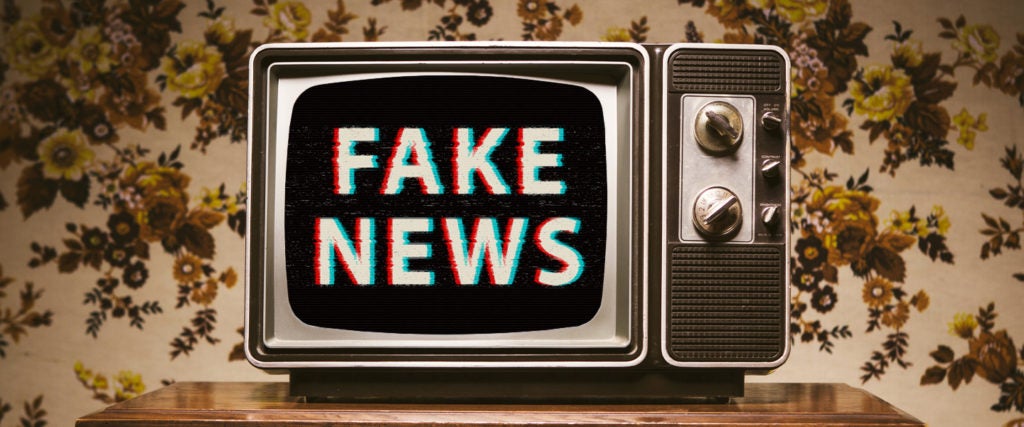As is happening all over the country at a frighteningly rapid pace, one of my family members innocently shared a piece of misinformation on Facebook the other day. Specifically, it was a piece of QAnon propaganda disguised as a post about child trafficking. They had no idea whether the post was accurate, nor the deceitful intentions behind it, only that it was scary enough that they felt the need to get the word out.

But for people like myself who spend most of our days shackled to the internet, the post radiated with misinformation. There wasn’t a single source, the writing was wrought with emotional appeals that pitted the pandemic against the “real virus” of child trafficking and the image quality was terrible. Nevertheless, more people I know shared it from there.
And why shouldn’t they? For Boomers especially, who have grown up consuming information through traditional media, there’s hardly any indication that what’s passed around on social media isn’t held to the same editorial standard. Which, of course, only perpetuates the problem once they share it with their followers, who share it with their followers and so on and so on and so on.
As powerless as you may feel, there is one way to take control at an individual level — enrolling yourself and/or your loved ones in a digital literacy course.
Tara Susman-Peña is the lead practitioner from IREX, a global development and education organization that’s spent the last five years developing a practical approach to teaching media literacy. In particular, she leads a course called “Learn to Discern: Media Literacy Trainer’s Manual,” and says as misinformation continues to explode, among the most important things we can do is educate each other on its common markers. These markers range from “presenting opinions as facts, using exclamation points or emphasis, calls to immediate action like ‘Please share immediately!’ and deferral of responsibility, such as, ‘I don’t know if it’s true or not, but a doctor sent this to me.’”
Admittedly, not every piece of misinformation features such markers, “so there’s not one single trick that will help you spot them, but there are signs that should tell you to be suspicious,” she explains. “Then you can decide whether you’ll check it out or not, but at least you’ll know not to help it spread by commenting, sharing or liking it — and that includes reposting it with, ‘Is this true?’”
More than knowing the markers, however, Susman-Peña says the main goal of her course is to change people’s behaviors around digital media consumption. She compares it to attempting to eat healthier. “As an adult, even if you want to change your behavior, it’s really hard to do,” she tells me. In other words, I know stuffing my face with nine Oreos smothered in peanut butter every day isn’t healthy, and yet, I can’t wait to do it again tonight. So if there’s any hope in successfully cutting Oreo binges from my life, it’s going to take a concerted effort to alter the habits I’ve built around my diet. The same goes for my online media diet.

It’s also very much a shared problem, meaning be careful about getting too high and mighty about this being a thing that only happens to other people. “We’re all experiencing it; we’re constantly bombarded with misinformation,” Susman-Peña says. “Yet, at the same time, none of us like to admit that we need to be better at discerning what information we share and consume.”
“One of the things we emphasize is that there’s a lot of humility involved,” she continues. “I always use myself when I’m training and the mistakes I make. Because honestly, we all have this issue. There are few people, if anyone, who wouldn’t be susceptible to it. This stuff is really quite sophisticated. Some of it looks simple, but it’s appealing to things deeply wired into our psychology.”

To use another analogy, Susman-Peña wants those who take her course to think about online information in terms of pollution. “Maybe you can’t be the one person who’s going to solve the environmental problem, but you can take the step of putting trash in the trash can and stopping that garbage from circulating and doing more damage,” she tells me. “To use one of our common reprieves, ‘Care before you share.’”
Unfortunately, social media has conditioned people to do the exact opposite — share the shit out of what they’re seeing and reading — and profits from them remaining on the platform and being active therein. “It’s so existential for [the platforms], because their business model has to do with keeping you on the screen for as long as possible. Unless there’s some sort of regulation or general outrage, what’s going to disincentivize them from doing that?” Susman-Peña asks.
And so, she concludes, “It’s going to take people holding themselves accountable, and knowing we each need to take a certain amount of responsibility. Each one of us has to; otherwise, I’m afraid of what happens next.”

